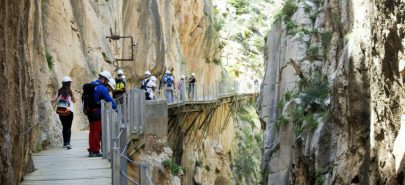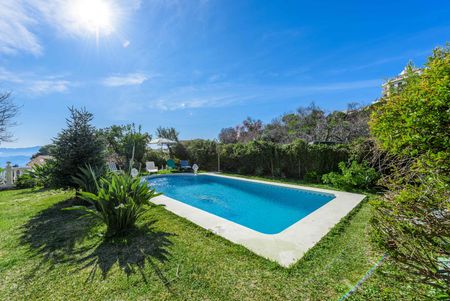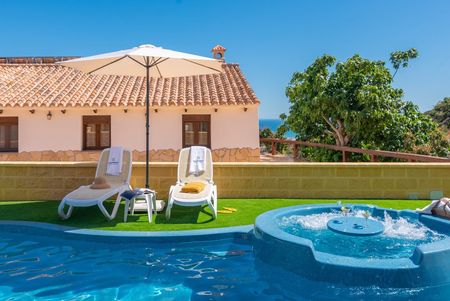Everyone knows that Andalucia is a paradise for sun-seekers and most people think that this Spanish region gives its best in summer. However, you should consider travelling to Andalucia in winter.
You will be easily surprised by how many things you can do and enjoy in the south of Spain from November to March. Ready to give it a go?
While all of us wait for the summer holidays to enjoy a getaway to the South of Spain, we suggest you take a chance, get off-the-beaten-track and travel to Andalucia in winter. In the year’s coldest season, you’ll have the possibility to soak up contrasting ambiences, discover things that go unseen in summer, and live the magic of the “chilliest” months in Europe’s warmest area.
Visiting Andalucia in winter has several advantages.
First and foremost, you won’t have to feel guilty about “killing” your beloved piggy bank. Travelling to Andalucia in the winter months is usually cheaper than doing it during the rest of the year. And you’ll be happy to know that this includes the accommodation, too! This is why, we provide you with a selection of Winter-Special holiday rentals in Andalucia, whose value for money will leave you speechless. In some cases, you will even save as much as 50% off the summer price for the same holiday let!
Besides being the piggy bank’s saviour, winter is also an excellent period to travel to Andalucia for the following reasons.
1. Christmas holidays, of course!
Everything is better at Christmas, we all know that. However, if you think Christmas is no Christmas at all without a little snow, you will have to reconsider that in Andalucia. The spread lack of the characteristic white cover, due to the average winter temperatures being around 17ºC (see next point!), is made up for by the lights that adorn the Andalusian cities, the filled-of-presents Christmas markets, the delicious smell of typical Christmas sweets that lead you to eye-appealing bakeries.
The peculiarity of the Christmas celebrations in Andalucia also feature the Three-Kings’ “Cabalgata”, a parade that takes place on January 5th in most Andalusian cities, to celebrate the Epiphany. Children and adults participate in the parade, on the carriages or walking in disguise, while they throw candies and sweets to the awaiting crowd.
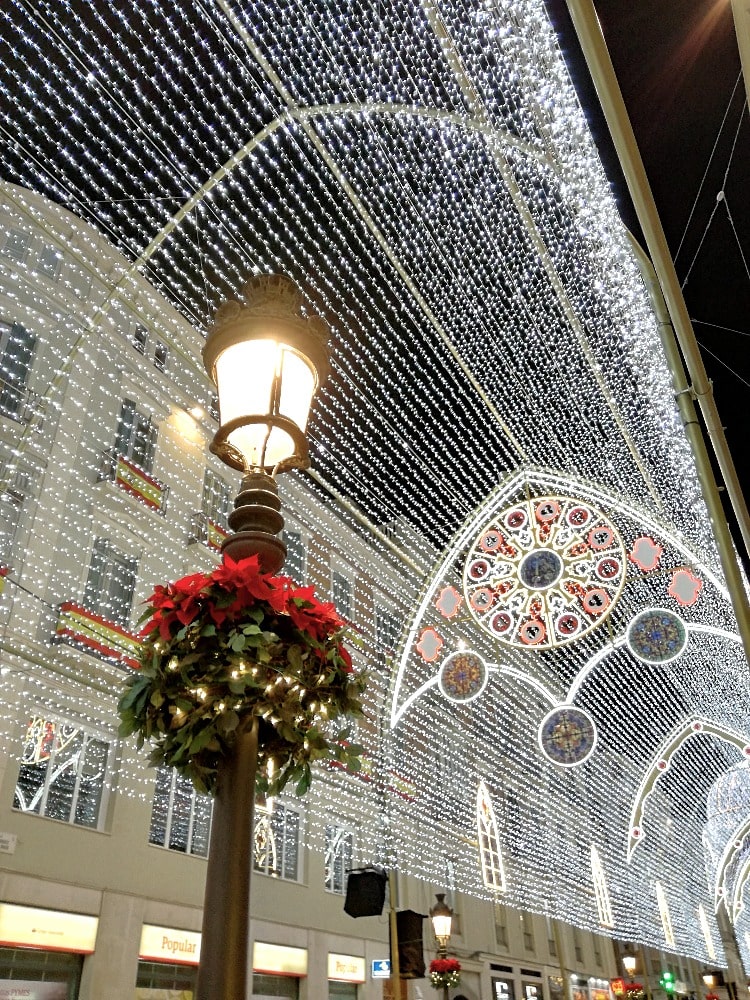
And, of course, the celebration of New Year’s Eve, when people reunite in the cities’ main squares to eat 12 grapes as the year’s last 12 seconds pass by.
You can be sure that experiencing Christmas in Andalucia is definitely worth spending your winter holidays in the south of Spain!
2. Summerlike temperatures in winter
If you belong to that category of people that get depressed as soon as October appears on the calendar, who don’t bear temperatures below 15ºC (which, however, still seem cold to you) and you wish you lived in the Caribbean but can’t afford it, then a much cheaper alternative is travelling to Andalucia in winter.
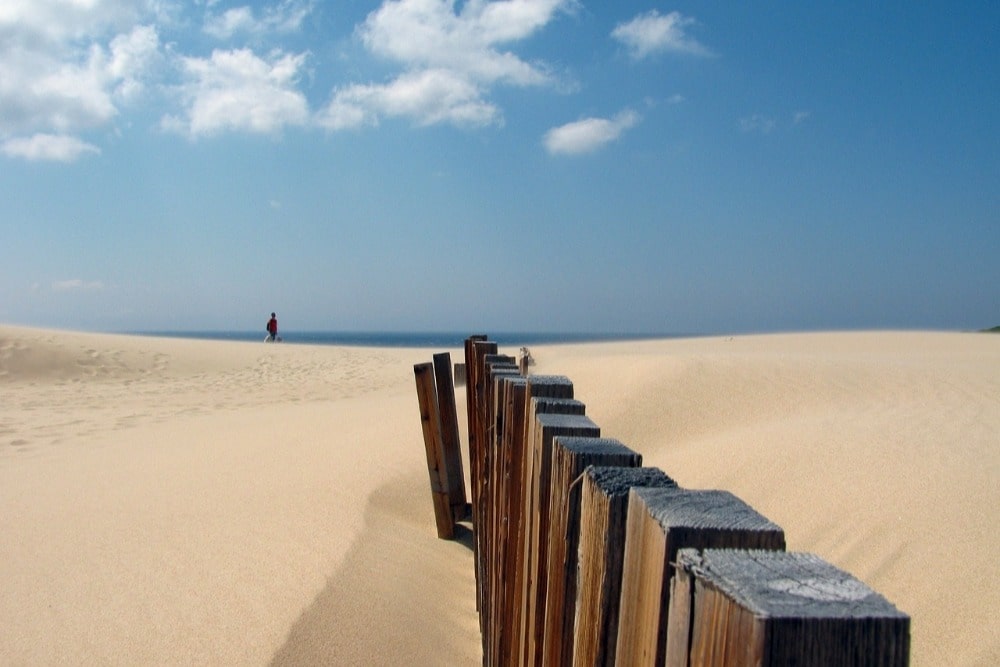
The famous Costa del Sol (Sun-Coast, wink-wink) and Costa de la Luz (Light-Coast) provide Andalucia with kilometres of white-sand beaches, small virgin caves and the possibility to enjoy the waters year round. In fact, it’s not surprising at all to see fearless people bathe in December (okay, maybe that’s too much, we grant you that!).
Besides, most beaches become dog-friendly at the beginning of the “bad” season, for which your four-legged friend is also welcomed to enjoy the warm temperatures by the shore.
3. But skiing is also an option
Don’t be misled! Even though Andalucia is best known for its warm temperatures, you should consider travel to the southern part of Spain in winter also if you’re more like the snowy-atmosphere-lover kind of person. In particular, Granada is the place to choose and, more specifically, the Sierra Nevada. Belonging to Europe’s second highest mountain range, the snow-topped peaks of this National Park offer fun and snow activities from late-November until late-March.
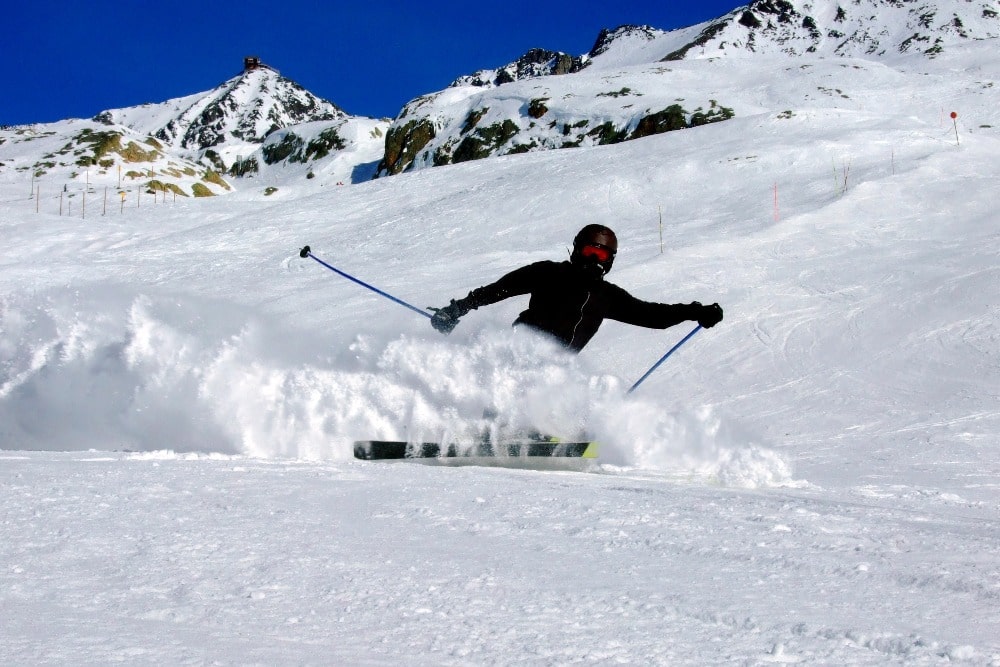
Ski resorts such as Sierra Nevada Ski Station, Pradollano, Sierra Essence offer daily and weekly ski-passes to enjoy the most wintery landscapes in Andalucia. This, together with the mountains’ closeness to the beaches (a 30-minute drive separate the Sierra Nevada from the Costa Tropical) lets you enjoy the best of both worlds during your winter getaway in the South of Spain!
4. Keep the Fiesta alive
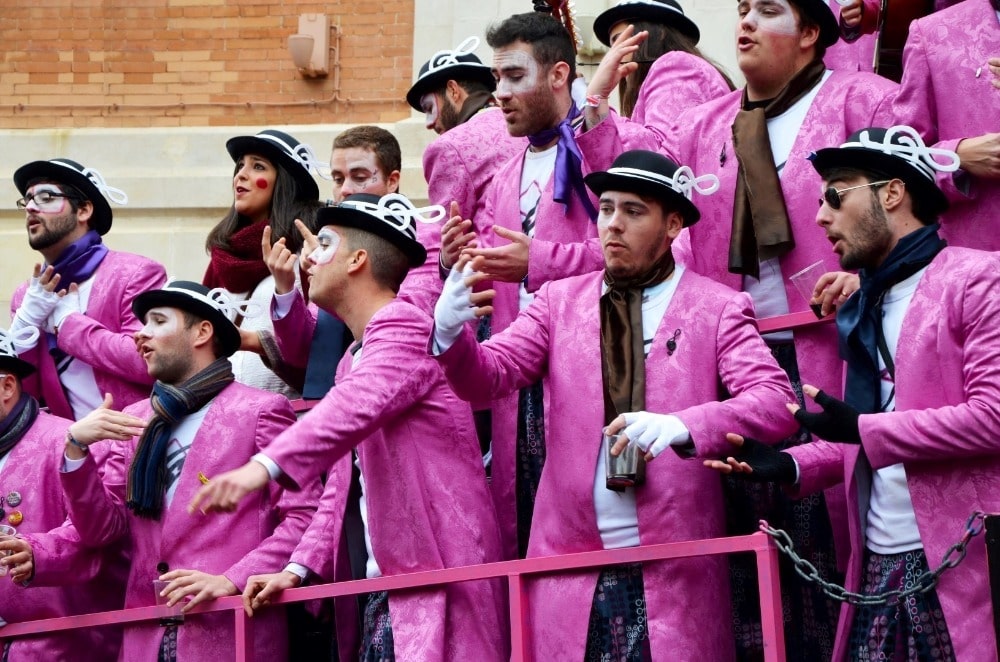
The fiestas don’t stop when the “bad” weather comes. Andalusians keep the atmosphere lively and continue to celebrate fiestas and ferias throughout the year. Apart from Christmas (duh!), you shouldn’t miss out on the Carnival that takes place in Cadiz in February and all the smaller gastronomy, religious and cultural fairs that liven up the region’s smallest towns.
5. A brand new cuisine
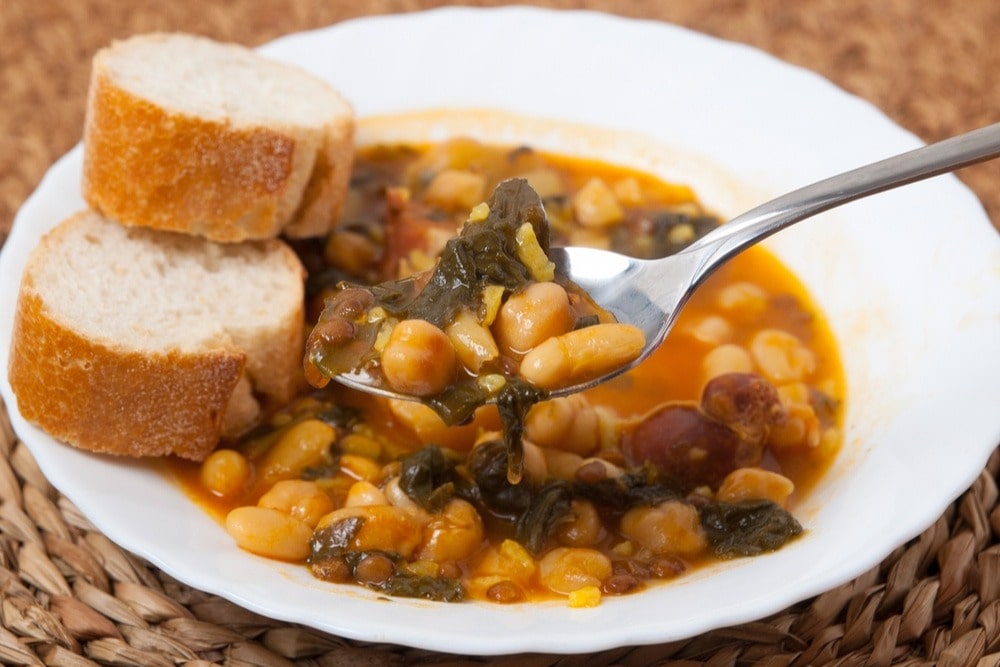
As winter approaches, the gastronomy changes, too. The gazpacho leaves space for Malaga’s gazpachuelo (a hot soup made of fish broth, egg, potato and extra-virgin olive oil), the puchero covers all the tables in the Andalusian households, and delicious desserts make everyone’s mouths water. Therefore, another great excuse to visit Andalucia in winter is its cuisine, whose smells and flavours are entirely different from those you can taste in other seasons.
6. Open-air activities without fearing a heatstroke
The mountainous landscape of Andalucia invites you to wear your most-comfortable mountain boots and take on the numerous hiking paths that run throughout Andalucia. By leaving the hottest summer temperature behind (which actually impede to enjoy a stroll in nature), the milder winter temperatures make for the perfect background to discover the Caminito del Rey (when it doesn’t rain), the paths of the Gran Senda de Málaga and the Senda Litoral, the beauties of Cabo de Gata in Almeria and Doñana in Huelva. The latter is particularly worth a winter getaway because here you’ll have to chance to spot migratory birds nestling and birds of prey populating the skies.
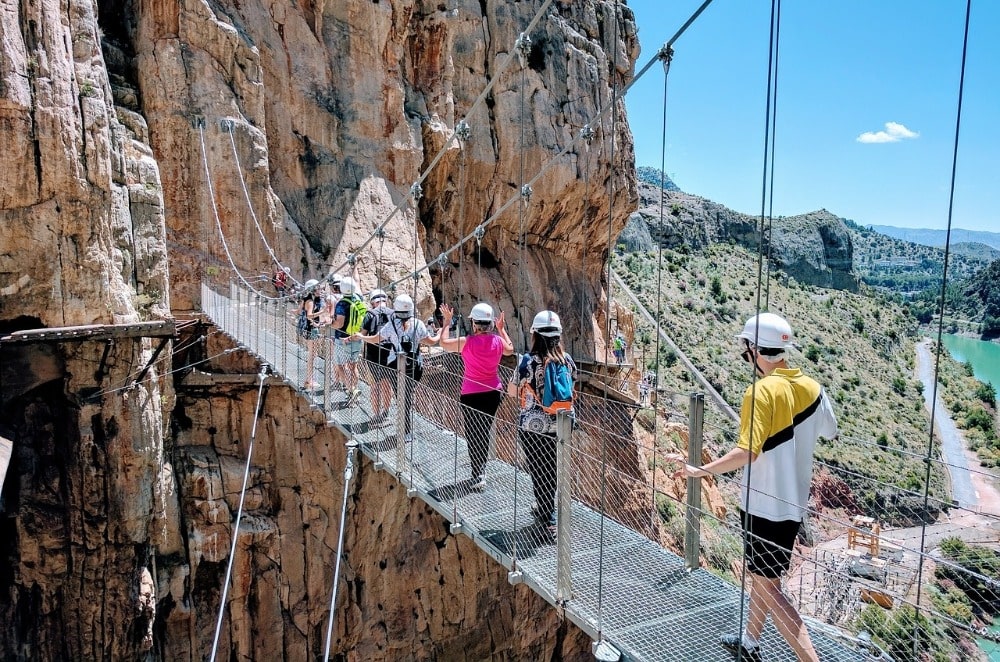
Likewise, you can play golf on the Costa del Sol (nicknamed Costa del Golf), do city-tourism and make the most of your visit to archaeological sites such as the Ruins of Baelo Claudia in Tarifa or the caves that populate Andalucia (Nerja, La Pileta and Ardales being just the most famous).
7. More time to visit Andalucia’s landmarks
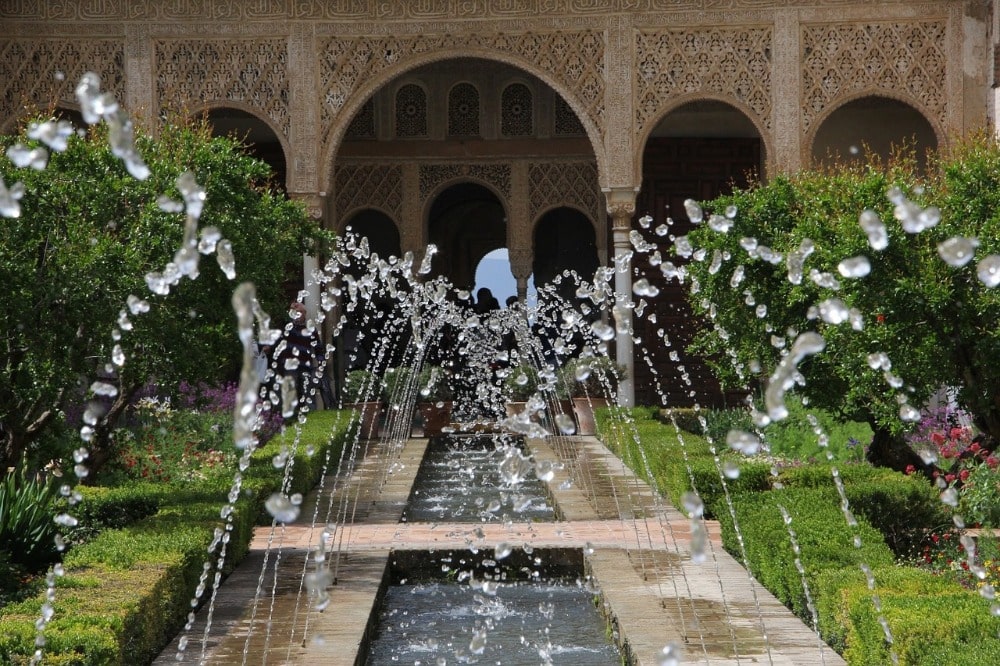
Because Andalucia is mainly populated in spring and summer, you will have the chance to explore the landmarks of the region in quietness if you choose to spend your winter holidays in the south of Spain. In fact, several monuments get less crowded as winter approaches, thus allowing you to visit them stress-free. Landmarks such as the Mosque-Cathedral in Cordoba, the Alhambra in Granada and the Cathedral in Seville are best enjoyed in silence, something you can experience only during the “coldest” months of the year.
You have no excuses to ditch Andalucia in winter and spend your winter holidays in the South of Spain!


 (7)
(7)

